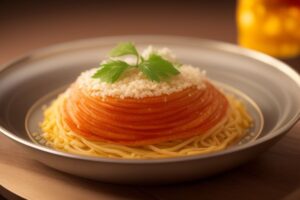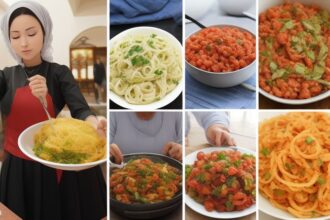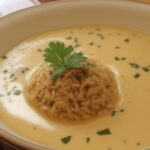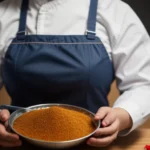
When it comes to Italian cuisine, pasta is undoubtedly one of the most iconic and beloved dishes. Mastering the art of pasta is not only a delicious way to satisfy your taste buds, but it is also a fun and rewarding culinary skill to have. Whether you are an experienced chef or a beginner in the kitchen, learning how to make authentic Italian pasta can be a rewarding experience. In this guide, we will explore everything you need to know to become a pasta-making pro.
1. The History of Pasta in Italy
Pasta has been a staple in Italian cuisine for centuries, with its roots dating back to ancient Rome. It was originally made by hand using simple ingredients such as flour and water. Over time, pasta-making techniques have evolved, and various shapes and forms of pasta have been created to suit different dishes and sauces.
2. Understanding the Basics of Pasta
Before you start making pasta from scratch, it is important to have a basic understanding of the ingredients and techniques involved. The main ingredients you will need are flour, eggs, and salt. Different types of pasta may also require additional ingredients such as semolina flour or water.
3. Choosing the Right Flour
The type of flour you use plays a crucial role in the texture and flavor of your pasta. Italian 00 flour is commonly used for making pasta as it has a fine texture and high protein content, which helps to create a chewy and firm pasta. If you cannot find 00 flour, all-purpose flour can also be used as a substitute.
4. Mixing and Kneading the Dough
To make pasta dough, simply mix the flour and eggs together until a rough dough forms. Knead the dough on a clean surface until it becomes smooth and elastic. This process may take some time and effort, but it is essential for developing the gluten in the dough, which gives pasta its texture.
5. Resting the Dough
After kneading the dough, it is important to let it rest for at least 30 minutes to allow the gluten to relax. This will make the dough easier to roll out and shape. Cover the dough with a damp cloth or plastic wrap to prevent it from drying out.
6. Rolling and Shaping the Pasta
Once the dough has rested, it is time to roll it out and shape it into your desired pasta shape. You can use a pasta machine or a rolling pin to roll out the dough into thin sheets. From there, you can cut the dough into different shapes such as fettuccine, spaghetti, or ravioli.
7. Cooking the Pasta
To cook fresh pasta, simply bring a pot of salted water to a boil and add the pasta. Fresh pasta cooks much faster than dried pasta, usually around 2-4 minutes depending on the thickness of the dough. Be sure to taste the pasta as it cooks to ensure it is al dente (firm to the bite).
8. Pairing Pasta with Sauces
One of the best things about pasta is its versatility when it comes to pairing with different sauces. From creamy Alfredo sauce to rich Bolognese, there are endless options to choose from. Experiment with different sauces to find your favorite combinations.
9. Storing and Freezing Pasta
If you have made more pasta than you can eat in one sitting, you can store the leftovers in an airtight container in the refrigerator for up to 2 days. Alternatively, you can freeze the pasta for longer storage. Simply lay the pasta in a single layer on a baking sheet and freeze until solid, then transfer to a freezer bag or container.
10. Tips for Perfect Pasta
– Use a generous amount of salt in the pasta water to season the pasta as it cooks.
– Don’t overcook the pasta, as it will become mushy and lose its texture.
– Save some pasta water to add to sauces for extra flavor and to help them stick to the pasta.
– Toss the pasta with the sauce in a separate pan to ensure even coating.
11. Regional Variations of Pasta
Each region in Italy has its own traditional pasta dishes that reflect the local ingredients and flavors. For example, in the south of Italy, you will find dishes such as orecchiette with broccoli rabe, while in the north, you may find dishes like tortellini in broth. Exploring regional variations of pasta is a great way to expand your culinary horizons.
12. Pasta Shapes and Names
There are hundreds of different shapes and names of pasta in Italian cuisine, each designed to hold different types of sauces. Some common shapes include spaghetti (long, thin noodles), penne (short tubes), and ravioli (filled pasta). Learning about the different pasta shapes and names can help you choose the right pasta for your dishes.
13. The Art of Making Homemade Ravioli
Ravioli is a classic Italian pasta dish made with delicate pasta dough filled with a variety of ingredients such as cheese, meat, or vegetables. Making homemade ravioli can be a labor of love, but the end result is well worth the effort. Experiment with different fillings and sauces to create your own signature ravioli dish.
14. Pasta-Making Classes and Workshops
If you are serious about mastering the art of pasta, consider taking a pasta-making class or workshop. Many culinary schools and cooking academies offer hands-on classes that teach you how to make pasta from scratch, as well as tips and tricks for perfecting your pasta dishes. This is a great way to learn from experienced chefs and fellow pasta enthusiasts.
15. Conclusion
Mastering the art of pasta is a rewarding culinary skill that allows you to create delicious and authentic Italian dishes in the comfort of your own kitchen. By understanding the basics of pasta-making, experimenting with different shapes and sauces, and practicing your technique, you can become a pasta-making pro in no time. So roll up your sleeves, dust off your rolling pin, and get ready to create some pasta masterpieces!Buon appetito!
















